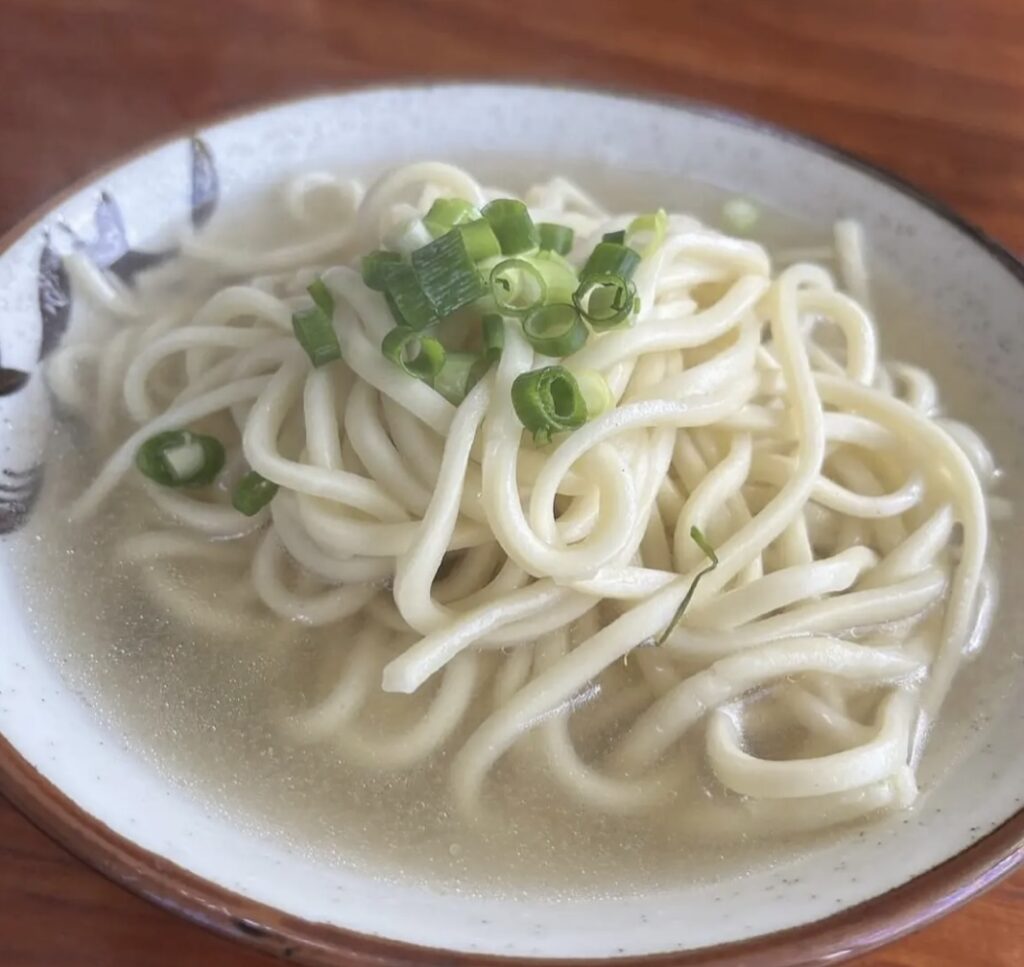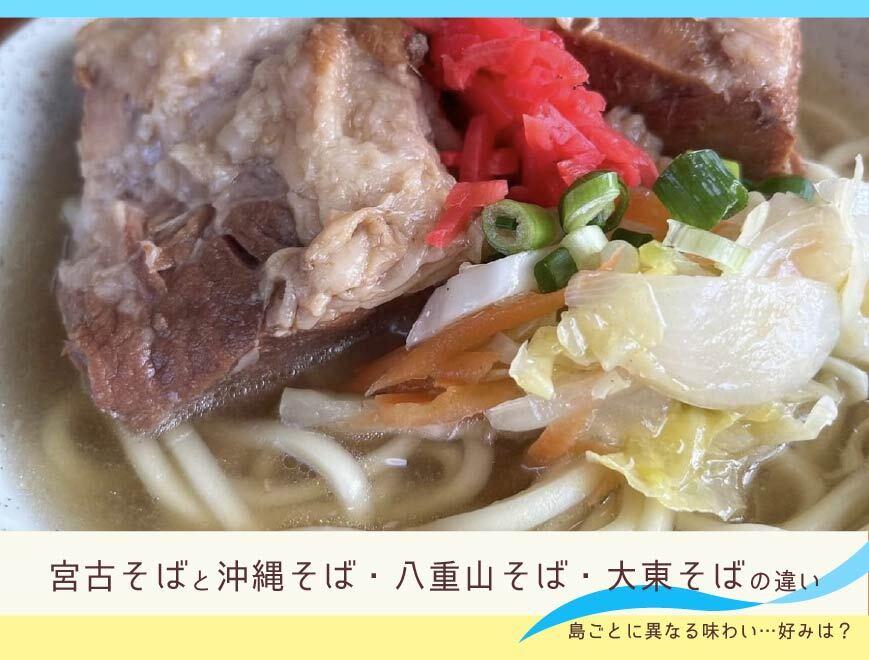Okinawa soba varies by region, with each type having distinct characteristics. The main differences lie in the noodles, toppings, and broth. Below is a detailed comparison of Okinawa soba, Miyako soba, Yaeyama soba, and Daito soba.


- Okinawa Soba (Okinawa Main Island)
On Okinawa’s main island, “Okinawa soba” typically uses two types of noodles: thick curly noodles and flat noodles. Thick curly noodles are more common in the central and southern parts of the island, while flat noodles are mainly found in the north.
Typical toppings include pork belly (sanmai niku), pork spare ribs (soki), and pig’s feet (tebichi). The broth is usually a rich combination of bonito and pork bone, known for its deep flavor. - Miyako Soba (Miyako Islands)
Miyako soba, eaten in the Miyako Islands, uses thick straight noodles that resemble udon in appearance.
Basic toppings are pork belly and kamaboko (a type of fish cake similar to satsuma-age). Traditionally, the toppings were hidden beneath the noodles, but nowadays most shops place them on top.
Miyako soba features a light, clear bonito-based broth with a simple, clean flavor. - Yaeyama Soba (Yaeyama Islands)
Yaeyama soba uses thin straight noodles, and the main topping is a small amount of finely sliced meat.
The noodles are soft, and the broth is bonito-based with a light and refreshing taste.
Though minimal in toppings, its simplicity is what makes it appealing. - Daito Soba (Daito Islands)
Daito soba is made with flat curly noodles that have a distinctive chewy texture.
The toppings and broth are often kept simple compared to other types of Okinawa soba, but each local shop adds its own regional flair and creativity.
How Toppings Influence the Name
The names of Okinawa soba dishes change depending on the toppings.
For example, “Sanmai niku soba” features pork belly, “Soki soba” includes pork spare ribs, and “Tebichi soba” is topped with pig’s feet.
Each cut of pork provides a different texture and flavor.

Through variations in noodles, toppings, and broth, each type of soba represents the local food culture of its region in Okinawa.

